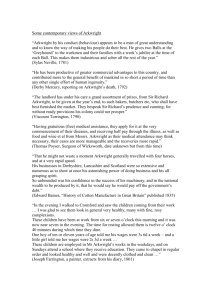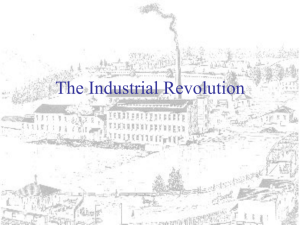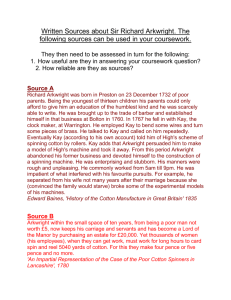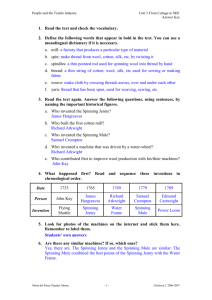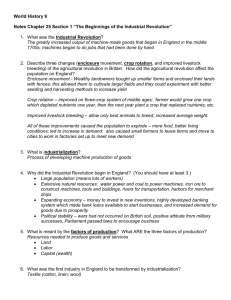Richard Arkwright
advertisement
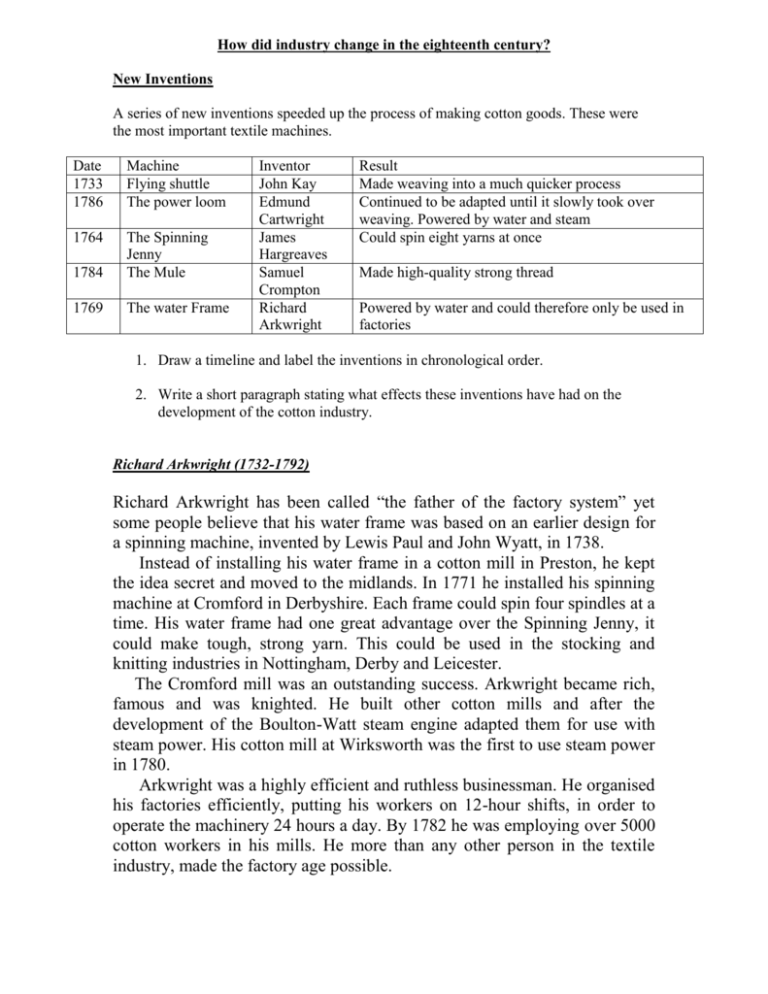
How did industry change in the eighteenth century? New Inventions A series of new inventions speeded up the process of making cotton goods. These were the most important textile machines. Date 1733 1786 Machine Flying shuttle The power loom 1764 1784 The Spinning Jenny The Mule 1769 The water Frame Inventor John Kay Edmund Cartwright James Hargreaves Samuel Crompton Richard Arkwright Result Made weaving into a much quicker process Continued to be adapted until it slowly took over weaving. Powered by water and steam Could spin eight yarns at once Made high-quality strong thread Powered by water and could therefore only be used in factories 1. Draw a timeline and label the inventions in chronological order. 2. Write a short paragraph stating what effects these inventions have had on the development of the cotton industry. Richard Arkwright (1732-1792) Richard Arkwright has been called “the father of the factory system” yet some people believe that his water frame was based on an earlier design for a spinning machine, invented by Lewis Paul and John Wyatt, in 1738. Instead of installing his water frame in a cotton mill in Preston, he kept the idea secret and moved to the midlands. In 1771 he installed his spinning machine at Cromford in Derbyshire. Each frame could spin four spindles at a time. His water frame had one great advantage over the Spinning Jenny, it could make tough, strong yarn. This could be used in the stocking and knitting industries in Nottingham, Derby and Leicester. The Cromford mill was an outstanding success. Arkwright became rich, famous and was knighted. He built other cotton mills and after the development of the Boulton-Watt steam engine adapted them for use with steam power. His cotton mill at Wirksworth was the first to use steam power in 1780. Arkwright was a highly efficient and ruthless businessman. He organised his factories efficiently, putting his workers on 12-hour shifts, in order to operate the machinery 24 hours a day. By 1782 he was employing over 5000 cotton workers in his mills. He more than any other person in the textile industry, made the factory age possible. 3. Why do you think Arkwright built his mill in Cromford in Derbyshire and not in Preston? 4. Was it an advantage or a disadvantage, that the water frame could only be used in a factory rather than in a spinner’s own cottage? 5. Why do you think that Richard Arkwright has been called “the father of the factory system?”

